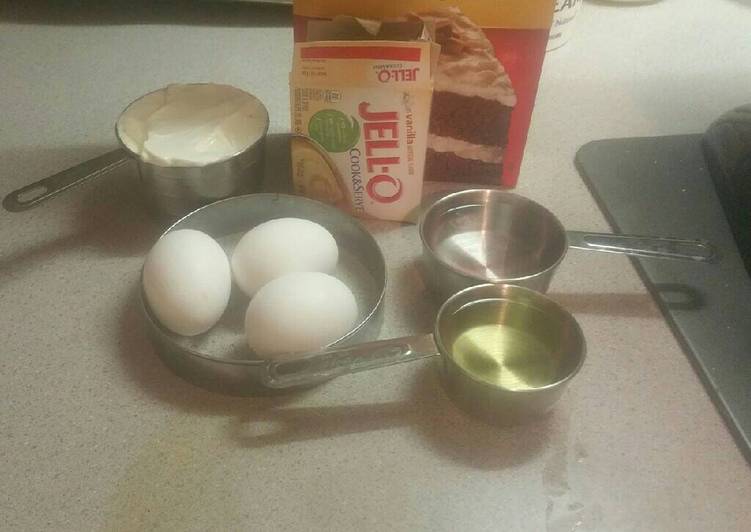
Hey everyone, it’s me, Dave, welcome to our recipe site. Today, I will show you a way to make a special dish, zero waste ramen. One of my favorites. For mine, I will make it a bit tasty. This is gonna smell and look delicious.
Zero Waste Ramen is one of the most well liked of current trending foods on earth. It is simple, it is quick, it tastes delicious. It is enjoyed by millions daily. They are fine and they look wonderful. Zero Waste Ramen is something which I’ve loved my whole life.
School breaks, family vacations, holiday visits - the works. So what if you're on a ramen-noodle-every-night budget, with save-the-planet aspirations? Zero Waste: A Rather Broad Term. Many of us limit zero waste to the physical trash that we throw out.
To begin with this recipe, we must prepare a few components. You can have zero waste ramen using 16 ingredients and 8 steps. Here is how you can achieve that.
The ingredients needed to make Zero Waste Ramen:
- Make ready Veggie scraps perfectly washed and clean
- Get 2 boneless chicken thighs
- Prepare Fresh or dry ramen noodles
- Take 1 Roasted Nori sheet
- Get 2 eggs
- Take 1/2 cup soy sauce
- Get 1/2 cup chicken stock or dashi stock
- Make ready 1 clove garlic
- Prepare 1 inch slice of fresh ginger
- Get 1 scallion
- Make ready 2 tsp brown sugar
- Make ready 1 tsp rice vinegar
- Make ready 1/4 cup mirin
- Prepare 1/4 cup sake or dry white wine
- Take Toppings of your choice
- Take to taste Salt and pepper
Reduce, Reuse and Recycle in Singapore. Being "zero waste" means that we adopt steps towards reducing personal waste and minimizing our environmental impact. Never buy hair elastics, coffee filters, or plastic sandwich baggies ever again.
Steps to make Zero Waste Ramen:
- Put veggie scraps in a large heavy pot and cover with water. Add around 2 tsp of salt, and bring to a boil. Boil them in high heat for about an hour tops.
- Remove the pot from the fire and strain the veggie scraps, reserving the resulting broth. It will be very bland. Don't worry, you can adjust the seasoning later.
- In a sauce pan mix the chicken or dashi stock with the soy sauce, the mirin, sake, sugar, rice vinegar, smashed garlic and ginger, and scallion. Stir and bring to a simmer. Cook on low heat until the mixture has reduced to about 1/2 cup of liquid. Be careful not to let the soy sauce burn. This will be the Tare, and will adjust the seasoning of the ramen.
- Boil two eggs, straight from the fridge, for 6 minutes. Start counting once the water starts boiling. The yolk should come up soft, or at least, perfectly yellow with no grayish rim.
- Add salt and pepper to both chicken thighs. In a skillet, cook the thighs skin side down first, until crispy and golden. Then flip and repeat. Set aside to rest, then cut each thigh into bite size strips.
- Cook the ramen noodles as instructed in the package. If you can't find any, use fresh spaghetti and replace the salt in the water with baking soda (sodium bicarbonate). Around 2 tsp should do.
- Fold the nori sheet four times and cut it into little rectangles.
- Finally, assemble the ramen: place 3 tbsp of tare in the bottom of the bowl, then add the noodles, followed by 4 ladlefuls of veggie broth. Place the toppings on top (the chicken thigh, and the egg sliced in half, and 4 nori sheets). I also added a shitake mushroom, a few slices of carrot, and corn. Be creative, and add any topping you want. Some flavoured oil can also add a great finishing touch (chilli oil, sesame oil, garlic oil, etc).
Never buy hair elastics, coffee filters, or plastic sandwich baggies ever again.
So that is going to wrap this up for this special food zero waste ramen recipe. Thanks so much for reading. I’m sure you can make this at home. There is gonna be more interesting food at home recipes coming up. Remember to save this page in your browser, and share it to your family, friends and colleague. Thanks again for reading. Go on get cooking!

